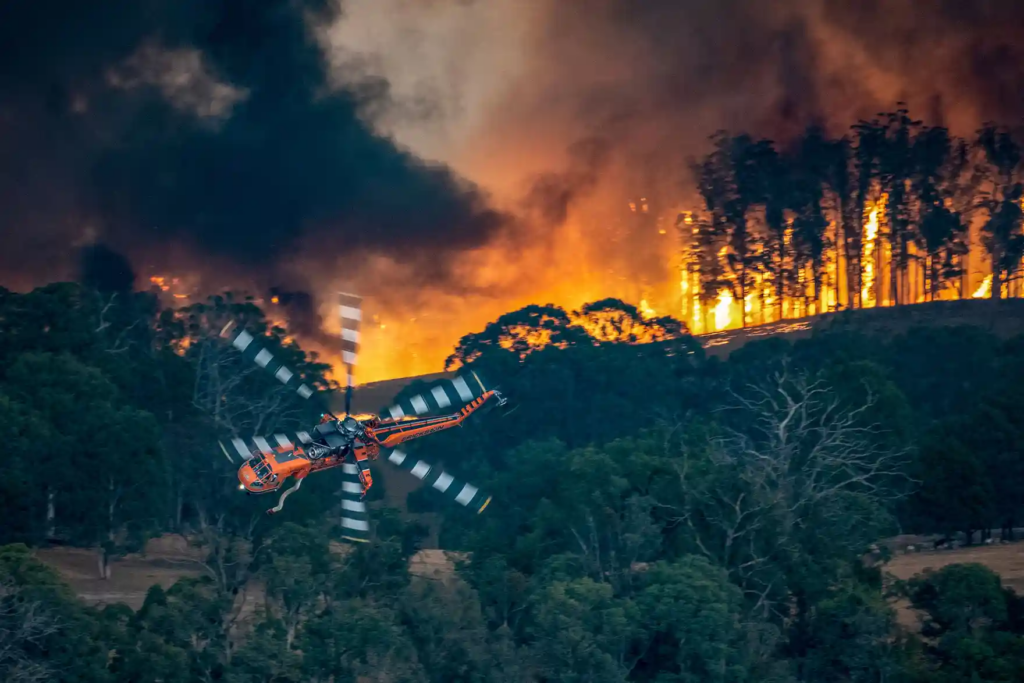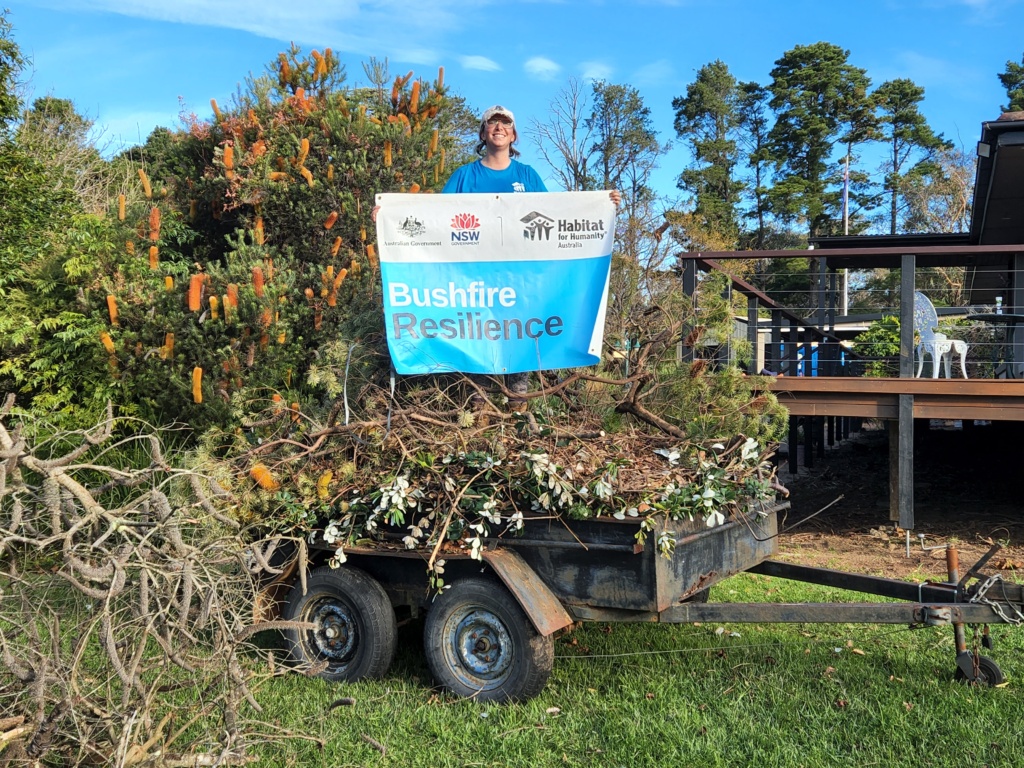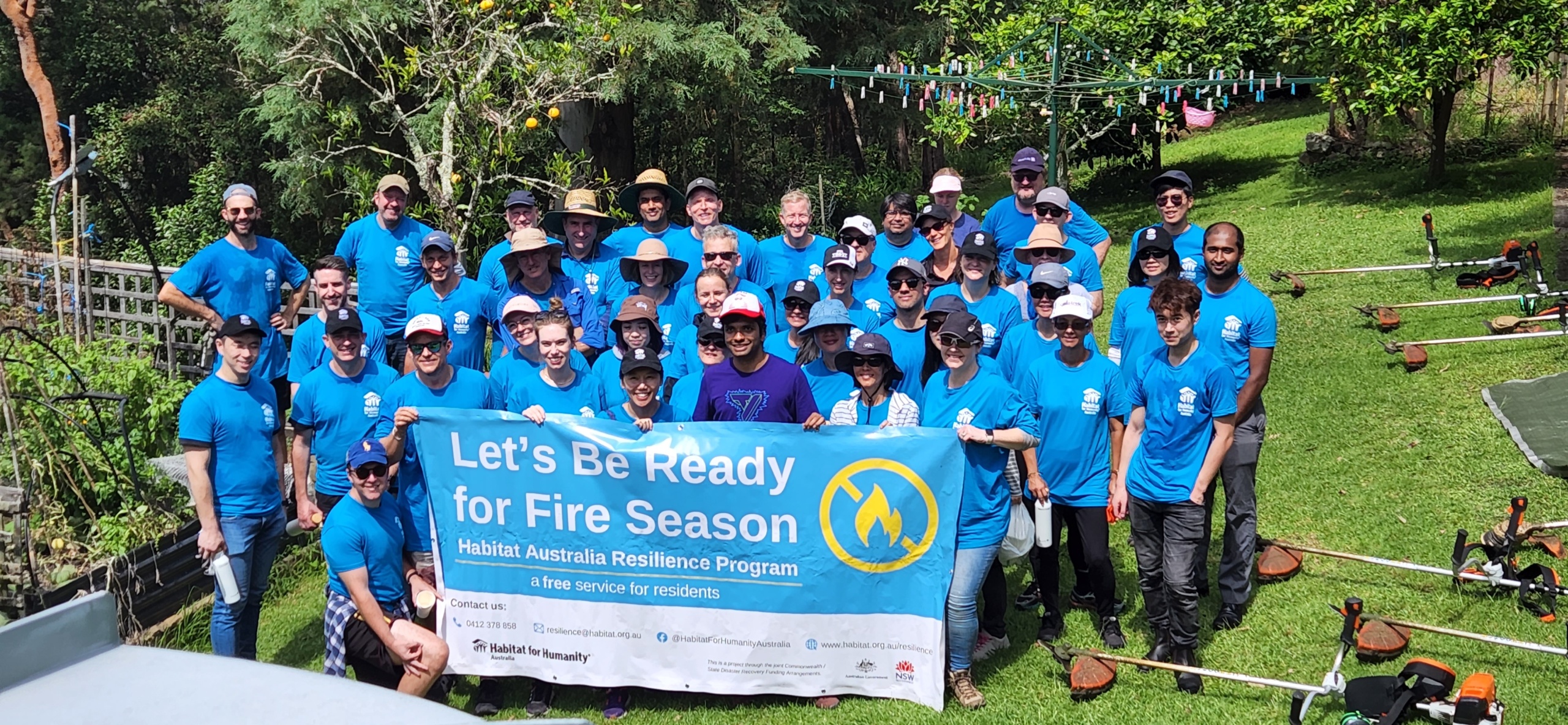Established in the aftermath of the Black Summer bushfires of 2019-2020, Habitat Australia’s Bushfire Resilience program supports vulnerable members of our community in building resilience and preparing for the future of our Australian Climate.
With three years of rain and floods since the fires, followed by a dry 2023, this season is predicted to be another disastrous one. Our Bushfire Resilience site supervisor, Ben Moller says there is growing anxiety, particularly amongst the elderly people we work with, about how they will prepare and withstand another fire season.
This is where Habitat Australia’s work comes in; we mobilise volunteers to help community members who may not have the capacity to maintain their homes and clear away any potential hazards on properties and shared spaces. This means clearing natural fuels like excessive overgrowth from this past wet season, removing flammable hazards and debris and clearing a fire path to protect both the home but also to act as an escape for both people and animals in the area.
But we can’t do this without enthusiastic volunteers! August and September 2023 are crucial in preparing for the summer fire season, so if you have been considering joining us, please see below for further information.

The Purpose
The purpose of the Bushfire Resilience program is to help those living in bushfire prone areas who may be unable to maintain their own land due to various reasons and are therefore at greater risk if a fire were to come through. Currently only 2% of the federal budget allocated towards disasters goes to building resilience, with 98% going to recovery. Taking a recovery approach rather than one of resilience means bigger, more destructive fires that burn for longer. During the Black Summer Fires in 2019-2020 over 24.3 million hectares of land was burnt, with smoke engulfing an area equivalent in size to Denmark including Greenland and the Faroe Islands, France, Spain, Sweden, Norway, Germany, Finland, Poland & Italy put together!
Our Bushfire Resilience program aims to bridge the gap between preparation and recovery. Bushfire Resilience is stopping disasters before they happen and mitigating the extent of recovery needed.
Where to Volunteer
The Bushfire Resilience program runs throughout the Blue Mountains and the Southern Highlands, from Wollondilly to Wingecarribee. These areas were most affected by the 2019-2020 bushfires; with 80% of the Blue Mountains being burnt and 58% of the Southern Highlands; both are expected to be affected once again in the next fire season.
How to Get There
Our Bushfire Resilience days are often in remote, or potentially hard to get to locations. We work at people’s homes meaning it’s not always close to public transport. The best way to get to your volunteer day is by car. We recommend carpooling or heading to the nearest bus or train station where we are happy to pick you up where possible!
What to Wear
We’re working in the bush and on overgrown properties, so it’s important you bring sturdy closed in shoes and long pants. In summer, we also recommend you bring a long sleeve button up shirt – something light that will protect you from the sun, that you’re able to take off if you get too hot. We also recommend a wide-brim hat, although we’ll give you your very own Habitat T-shirt and cap! We’ll provide you with anything extra you need on the day, like gardening gloves.
What to Bring
Bring suncream, a bottle of water and some food. We provide lots of water refills, tea and coffee on the day as well as snacks to keep you motivated, but it’s always best to be extra prepared. Many of our volunteers take the lunch break as an opportunity to explore the nearest town and grab a bite. However, if we have a large group of volunteers that day, we’ll aim to provide lunch to keep everyone together and make sure no one gets lost!
What You’ll Be Doing
You’ll be doing anything from weeding, pruning, clearing leaves and branches to using power tools like weed cutters, lawn mowers and woodchippers. The jobs are physical and the areas you’ll be working in can vary, this means a decent level of physical fitness is required. However, which of the necessary jobs you take on during the day is up to you! We’ll usually be able to find something for all abilities, and no previous experience with power tools is required.
The Community
You’ll be working alongside our Habitat Australia team as well as other volunteers from all walks of life. A group might be any size from 3 people to 30 people or more, although usually our groups are on the smaller side. This gives you a great chance to chat, connect and make friends whilst you work. We might be bias, but we think our volunteers are some of the kindest, most authentic people around.

You can sign up to volunteer on a bushfire resilience day here! We can’t wait to see you on site!


